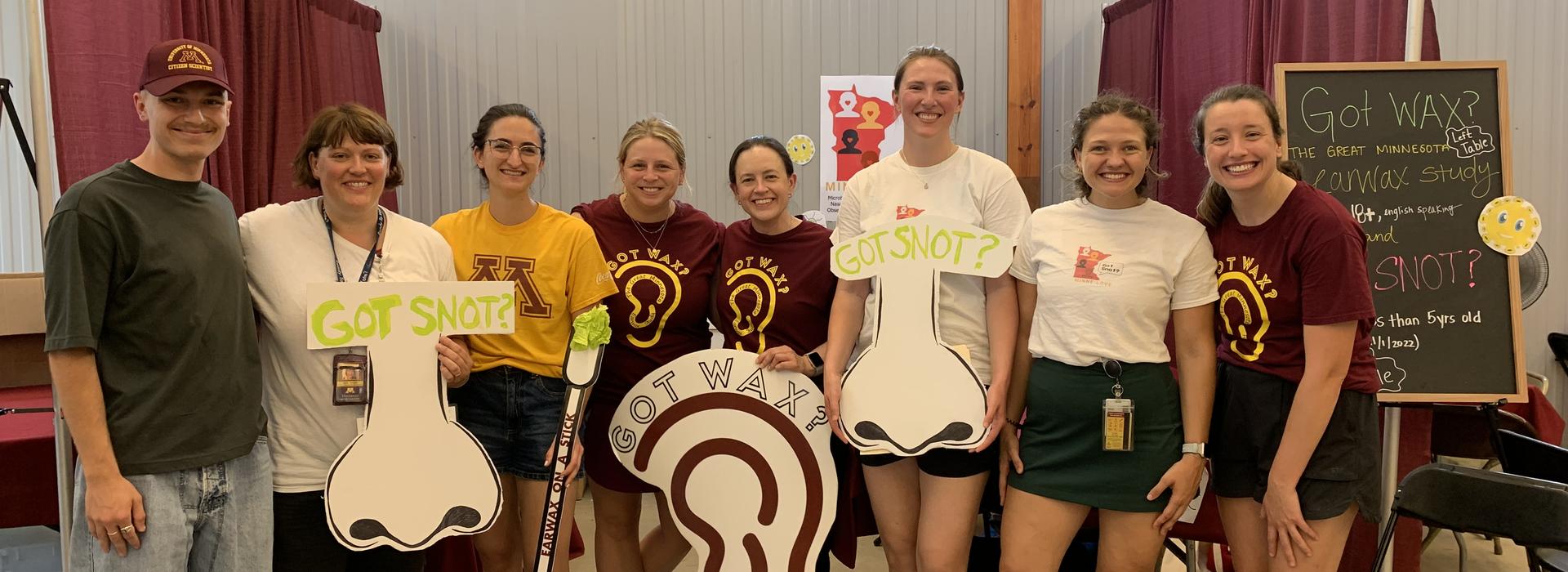
MINNELOVE
The full name of the study is Microbiome Influences on Nursery Nasal Environment-Longitudinal Observations of Viral Epidemiology (MINNE-LOVE)
The goal of our study is to understand how the microbes that live in your child’s respiratory tract, specifically in the nose, affect his or her risk for ear infections, colds, pneumonias, and other types of respiratory disease caused by viruses.
For more information, contact study team at minnelove@umn.edu.
We are currently finished enrolling participants for this study, however stay tuned for updates on other potential studies to be involved with, such as our MINNE-LOVE-2 "Got Snot?" study.
What are viruses?
A virus is a type of microscopic infectious agent. Unlike bacteria, viruses can only reproduce by infecting cells. Scientists have identified many types of viruses that can infect different kinds of cells, ranging from bacteria to plants and animals, including people.
How do I tell if I have a respiratory virus?

It is not possible to tell which virus or viruses a person has from their symptoms alone. A laboratory test is needed to do this.
What are respiratory viruses?

Respiratory viruses are viruses the primarily infect the cells that line the respiratory tract. This can include the nose, mouth, throat, sinuses, airways and lungs.
The symptoms caused by different respiratory viruses are often quite similar. Doctors classify symptoms into two main groups:
- Local symptoms: These are symptoms that affect primarily the body part where the infection started. They include runny nose, sore throat, cough, wheeze and shortness of breath.
-
Systemic symptoms: These are symptoms that affect the whole body such as fevers, chills or muscle aches and are usually cause by your immune system’s response to the virus.
Not all people are affected in a same way by a particular virus. The same virus can cause mild or no symptoms in some people and severe symptoms in others. The Thielen lab is studying the factors that lead to these differences.
What is the respiratory microbiome?
The respiratory microbiota is the community of microbes composed of bacteria, fungi, and viruses found in or along the respiratory tract. This includes the nose, mouth, inner ears, sinuses, and lungs.
How do we study the microbiome?
All microbes have nucleic acid in the form of DNA or RNA that provides the molecular instructions for making more microbes. The specific sequence of the nucleic acid is unique to each particular type of microbe. Researchers use laboratory techniques to extract the nucleic acid from nose swabs submitted by study participants to determine which types of microbes are present in the specimen.